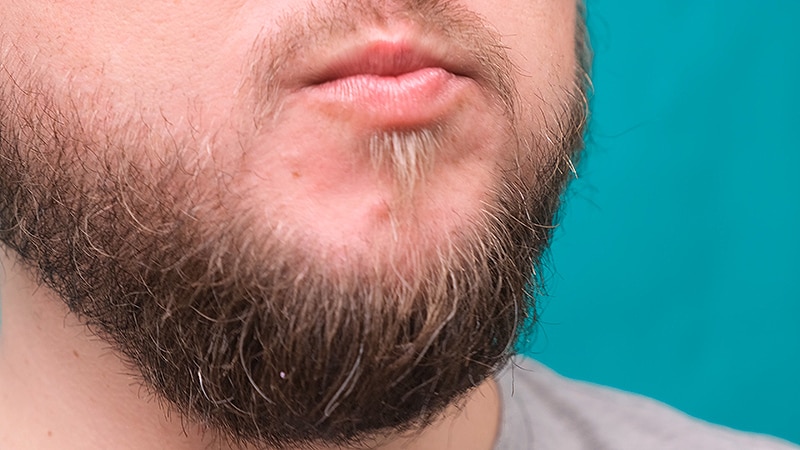Diabetic Neuropathy Associated With Chewing Difficulty
Neuropathy was associated with masticatory (chewing) dysfunction independent of missing teeth or diabetes severity in a small study in Japan.
“We demonstrated that patients with type 2 diabetes who developed diabetic neuropathy had significantly reduced masticatory efficiency,” Yuta Hamamoto, DDS, PhD, and colleagues report in a study published online in PLoS One.
The decreased chewing ability was independent of missing teeth or diabetes severity, Hamamoto, a clinical fellow in the Department of Periodontal Medicine, Graduate School of Biomedical and Health Sciences, Hiroshima University, Japan, clarified in an email to Medscape Medical News.
Their findings are important because “chewing well is essential for successful diet therapy and control of blood glucose level in patients with hyperglycemia,” the researchers explain.
Successful diet therapy requires that a doctor and nutritionist pay attention to the patient’s chewing ability. Dental intervention may also be required, Hamamoto said.
“We can restore their occlusal function by prosthetic and periodontal treatment,” he said. “We can also examine the oral function and give patients rehabilitation to improve mastication.”
Chewing Ability Quantified
Good glycemic control in type 2 diabetes delays the onset and progression of microvascular complications including nephropathy, neuropathy, and retinopathy, the researchers write.
At the same time, periodontitis is characterized by tooth mobility or loss leading to chewing dysfunction, and it is widely accepted that tooth loss is associated with diabetes.
Hamamoto and colleagues aimed to determine whether chewing ability was associated with microvascular complications of diabetes using a new test that quantifies chewing ability.
They enrolled 172 patients with type 2 diabetes who underwent educational hospitalization in the Department of Endocrinology and Diabetes Medicine, Hiroshima University Hospital from April 2016 to March 2020.
These patients had developed severe diabetes and were hospitalized to receive education about diabetes, nutrition, and therapy, including guidance about how to inject insulin, Hamamoto explained.
The patients provided blood and urine samples that were used to measure urine creatinine, serum urinary albumin excretion, and urine albumin-to-creatinine ratio to detect diabetic nephropathy.
Diabetic neuropathy was diagnosed as having two of the following: diabetic neuropathy symptoms, reduced Achilles tendon reflex, or decreased vibration sensation on the internal malleolus.
The patients had an eye exam to detect diabetic retinopathy.
They had a dental exam that included a count of moving (loose) teeth, missing teeth, and detection of periodontitis.
At baseline, the patients had a mean age of 61 and 58% were men. On average, they had had diabetes for 11 years, and their mean A1c was 10.3%.
Close to three quarters of the patients had diabetic neuropathy (71%) and a quarter had diabetic retinopathy (25%). About half had stage 1 chronic kidney disease (CKD) (53%) and fewer had stage 2 CKD (34%), stage 3 CKD (7%), or stage 4 CKD (6%); none had stage 5 CKD.
On average, the patients had 23 teeth and two moving teeth. None had dental implants and 46 patients had removable prostheses.
Chewing efficiency was measured using a chewing ability test (Gluco Sensor GS-II, GC Corporation, Tokyo, Japan). For this test, patients chewed 2 g of gummy jelly that contained about 100 mg of glucose for 20 seconds, then rinsed with 10 mL of water, and then spat the chewed jelly and water into a cup covered with a mesh. The sensor detected the amount of glucose in the filtrate, and the average of two tests was taken as a measure of chewing efficiency.
Chewing efficiency was significantly associated with duration of diabetes (P = .049), number of remaining teeth (P < 0001), number of moving teeth (P = .007), and having diabetic neuropathy (P < .0001).
Age, body mass index, A1c, periodontal inflammatory surface area, sex, and current smoking were not significantly associated with chewing ability.
After adjusting for multiple variables, diabetic neuropathy was significantly associated with lower chewing efficiency (P = .007), as was having fewer than 20 teeth (P ≤ .0001).
However, “unexpectedly,” neither diabetic retinopathy nor diabetic nephropathy correlated with masticatory efficiency, the researchers write.
“These results imply that diabetic neuropathy could be the cause of the resultant masticatory disorder in diabetes patients,” they conclude.
They propose two biological mechanisms to explain this. Diabetic neuropathy may cause loss of muscle involved in chewing, or it may cause trigeminal nerve palsy (lack of nerve function) in muscles involved in chewing.
However, unlike previous studies, the current study did not find that periodontitis was associated with chewing ability. Therefore, more research is needed.
Two researchers were supported by the Grants-in-Aid for Scientific Research (KAKENHI) program. The authors have reported no competing financial disclosures.
PLoS One. Published online June 6, 2022. Article
For more diabetes and endocrinology news, follow us on Twitter and Facebook.
Source: Read Full Article
